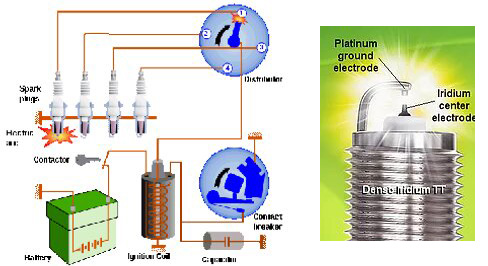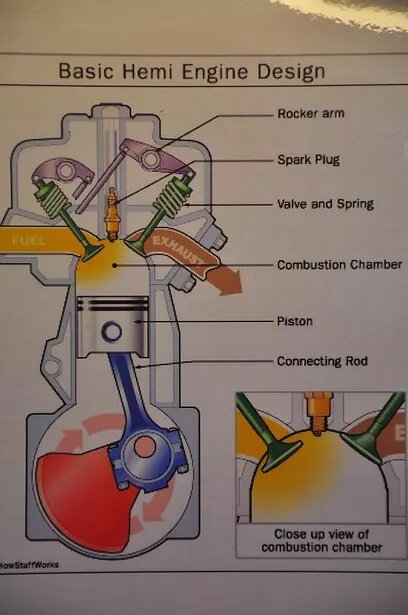Details
A spark plug (sometimes, in British English, a sparking plug,[1] and, colloquially, a plug) is a device for delivering electric current from anignition system to the combustion chamber of a spark-ignition engine to ignite the compressed fuel/air mixture by an electric spark, while containing combustion pressure within the engine. A spark plug has a metal threaded shell, electrically isolated from a central electrode by aporcelain insulator. The central electrode, which may contain a resistor, is connected by a heavily insulated wire to the output terminal of anignition coil or magneto. The spark plug's metal shell is screwed into the engine's cylinder head and thus electrically grounded. The central electrode protrudes through the porcelain insulator into the combustion chamber, forming one or more spark gaps between the inner end of the central electrode and usually one or more protuberances or structures attached to the inner end of the threaded shell and designated the side, earth, or ground electrode(s).
Spark plugs may also be used for other purposes; in Saab Direct Ignition when they are not firing, spark plugs are used to measure ionization in the cylinders – this ionic current measurement is used to replace the ordinary cam phase sensor, knock sensor and misfire measurement function.[citation needed] Spark plugs may also be used in other applications such as furnaces wherein a combustible fuel/air mixture must be ignited. In this case, they are sometimes referred to as flame igniters. [citation needed]


View more about Denso Iridium Power for Toyota Estima/Alphard/Vallfire on main site

